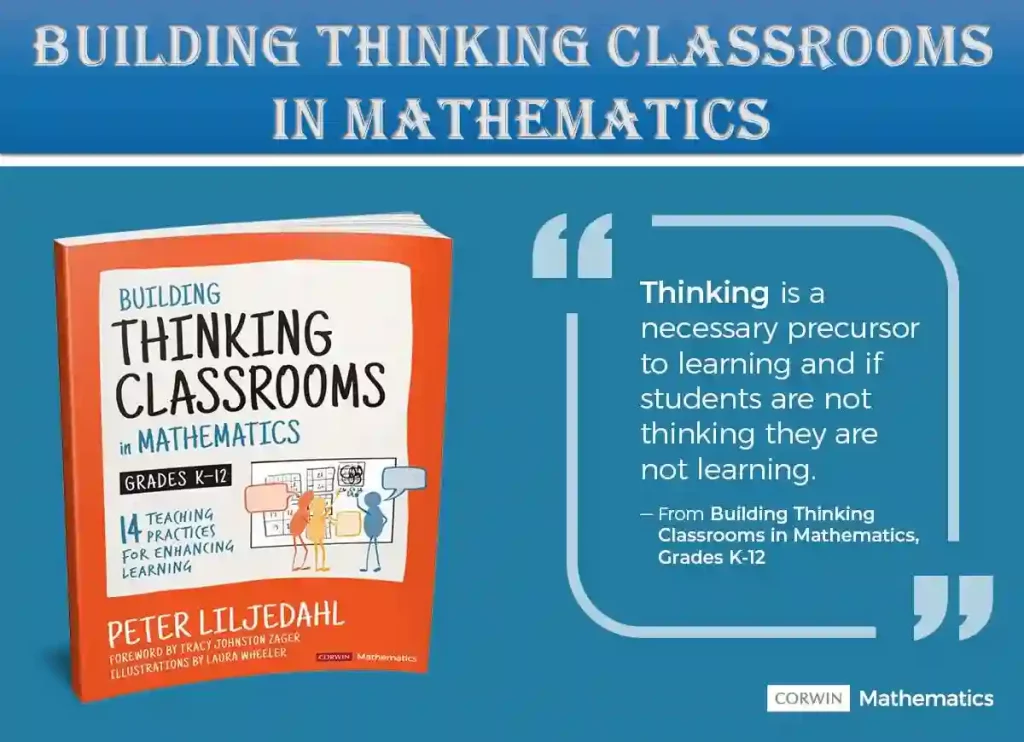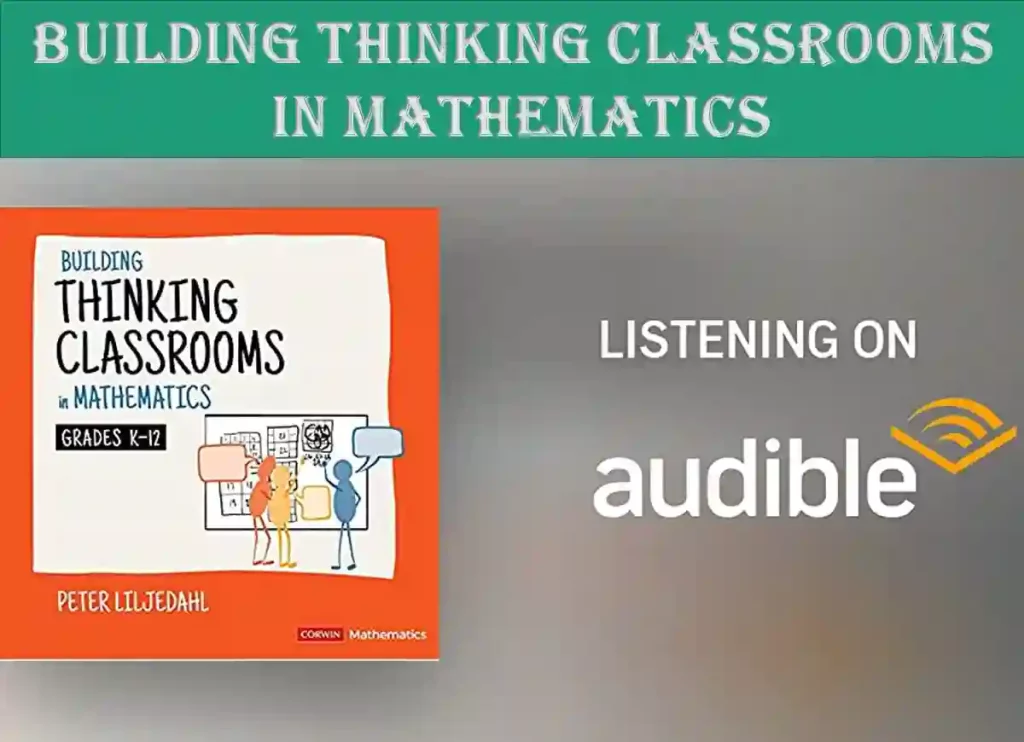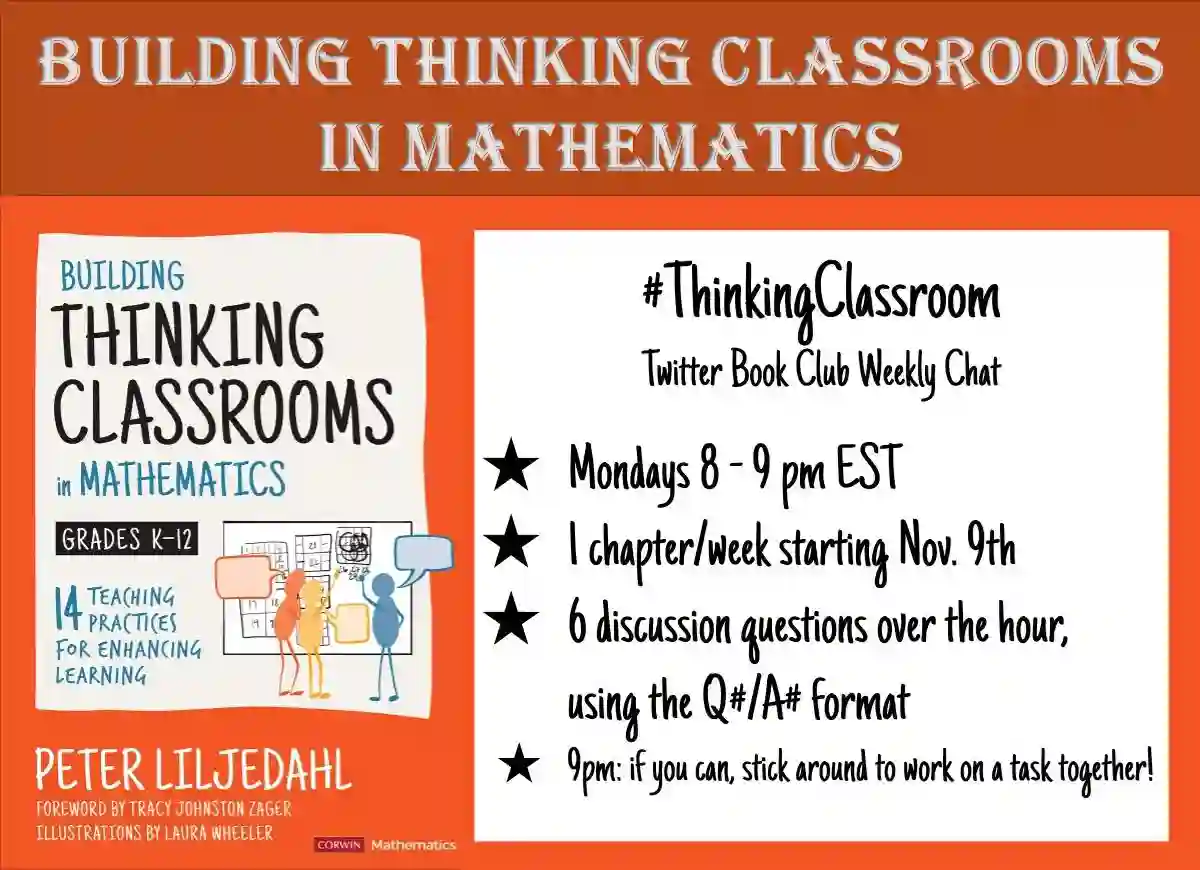Building Thinking Classrooms in Mathematics is a revolutionary approach that aims to transform traditional math classrooms into dynamic and engaging environments.
It focuses on fostering critical thinking, problem-solving skills, and a deep conceptual understanding of mathematical concepts.
By implementing this innovative approach, educators can empower students to become active learners and independent thinkers in the field of mathematics.
Suggested Read: algebra functions and data analysis


Benefits of Building Thinking Classrooms in Mathematics:
- Enhanced Critical Thinking Skills: The primary benefit of Building Thinking Classrooms is the development of critical thinking skills among students. Through problem-solving activities and open-ended tasks, students are encouraged to think critically, analyze information, and make connections between different mathematical concepts. This approach equips them with valuable skills that extend beyond the realm of mathematics and are applicable in various real-life scenarios.
- Increased Engagement and Motivation: Building Thinking Classrooms creates a stimulating learning environment that fosters student engagement and motivation. By incorporating interactive discussions, collaborative group work, and hands-on activities, students are actively involved in the learning process. This active participation not only enhances their interest in mathematics but also boosts their overall engagement in the classroom.
- Deep Conceptual Understanding: Traditional math classrooms often focus on rote memorization and procedural fluency, which may hinder students’ ability to develop a deep conceptual understanding of mathematical principles. However, Building Thinking Classrooms emphasizes the exploration and understanding of underlying concepts, enabling students to grasp the why and how behind mathematical ideas. This deeper understanding leads to improved retention and the ability to apply mathematical knowledge flexibly.
- Encourages Mathematical Communication: Effective communication is an essential skill in mathematics, and Building Thinking Classrooms nurtures this aspect. Students are encouraged to articulate their thought processes, justify their reasoning, and engage in mathematical discourse. Through these interactions, students refine their communication skills and learn to express mathematical ideas clearly, strengthening their overall mathematical proficiency.
Main Chapters and Subchapters: I. Introduction to Building Thinking Classrooms in Mathematics A. Rationale for Transforming Traditional Math Classrooms B. Principles and Framework of Building Thinking Classrooms
II. Fostering Critical Thinking Skills in Mathematics A. Problem-Solving Strategies B. Mathematical Inquiry and Exploration C. Developing Metacognition and Reflective Thinking
III. Creating an Engaging Learning Environment A. Collaborative Learning and Cooperative Structures B. Differentiation and Personalization C. Incorporating Technology for Enhanced Learning
IV. Deepening Conceptual Understanding A. Conceptual Teaching Approaches B. Making Connections Between Mathematical Concepts C. Representations and Visualization in Mathematics
V. Promoting Mathematical Communication A. Orchestrating Effective Classroom Discourse B. Questioning Strategies for Inquiry-Based Learning C. Assessing and Providing Feedback on Mathematical Communication Skills
Suggested Read: Math kangaroo past papers
Product details
- Publisher : Corwin; First Edition (October 30, 2020)
- Language : English
- Paperback : 344 pages
- ISBN-10 : 1544374836
- ISBN-13 : 978-1544374833
- Item Weight : 3.53 ounces
- Dimensions : 7 x 0.78 x 10 inches
Questions and Answers about Building Thinking Classrooms in Mathematics:
Q: What is the main goal of Building Thinking Classrooms in Mathematics?
A: The main goal is to transform traditional math classrooms into dynamic learning environments that foster critical thinking, problem-solving skills, and a deep conceptual understanding of mathematics.
Q: How does Building Thinking Classrooms benefit students?
A: Building Thinking Classrooms benefits students by enhancing their critical thinking skills, increasing engagement and motivation, promoting a deep conceptual understanding of mathematics, and encouraging effective mathematical communication.
Q: What teaching strategies are emphasized in Building Thinking Classrooms?
A: Building Thinking Classrooms emphasizes problem-solving strategies, mathematical inquiry and exploration, collaborative learning, conceptual teaching approaches, and effective classroom discourse.
Q: How does Building Thinking Classrooms promote mathematical communication?
A: Building Thinking Classrooms promotes mathematical communication by encouraging students to articulate their thought processes, engage in mathematical discourse, and refine their communication skills through various questioning and feedback strategies.
Suggested Read: Basic geometry worksheets pdf

About Author
“Building Thinking Classrooms in Mathematics” is a highly acclaimed book written by Peter Liljedahl, an influential figure in mathematics education. Published in 2016, the book presents innovative and practical strategies for transforming traditional math classrooms into vibrant learning environments that foster critical thinking, collaboration, and problem-solving skills.
Peter Liljedahl is a professor of mathematics education at Simon Fraser University in British Columbia, Canada. With years of experience in teaching mathematics at various levels, he has devoted his research and practice to reimagining math education and promoting student engagement and deep learning.
His expertise lies in the field of instructional design, classroom discourse, and the effective use of technology to enhance mathematical thinking.
In “Building Thinking Classrooms in Mathematics,” Liljedahl emphasizes the importance of creating a classroom culture that encourages students to think deeply and independently about mathematical concepts.
He challenges the traditional approach of teacher-centered instruction and instead advocates for a student-centered approach where students actively participate in mathematical exploration and sense-making.
One of the central ideas presented in the book is the use of visibly random groups (VRG) as a means to promote collaboration and problem-solving. VRGs involve randomly assigning students to small groups for short periods, allowing them to work together on challenging mathematical tasks.
This strategy not only encourages peer-to-peer learning but also provides students with diverse perspectives and approaches to problem-solving.
Liljedahl also introduces the concept of vertical non-permanent surfaces (VNPS), which refers to the use of whiteboards or large sheets of paper mounted on classroom walls.
These surfaces provide students with a space to work collaboratively, share their thinking, and visually represent their mathematical ideas. By making students’ thinking visible, VNPS facilitate rich discussions and allow teachers to assess students’ understanding in real-time.
Furthermore, the book delves into the importance of fostering a growth mindset in mathematics classrooms. Liljedahl encourages teachers to create an environment where mistakes are seen as opportunities for learning and persistence is valued.
By reframing challenges as learning opportunities and providing timely feedback, teachers can help students develop a positive attitude towards mathematics and embrace the inherent struggle that comes with deep learning.
“Building Thinking Classrooms in Mathematics” has garnered widespread recognition and has become a valuable resource for educators seeking to transform their math classrooms.
Its practical strategies, research-based insights, and emphasis on student engagement make it a go-to guide for teachers, instructional coaches, and math curriculum developers.
Peter Liljedahl’s work extends beyond the book itself. He has conducted numerous professional development workshops and delivered keynote speeches worldwide, sharing his research and empowering educators to create dynamic and inclusive learning environments.
Through his contributions, Liljedahl has made a significant impact on the field of mathematics education, inspiring teachers to rethink their practices and cultivate thinking classrooms that nurture mathematical understanding and curiosity.
Suggested Read: Algebra 2 formula sheet pdf








